In an uplifting conservation success story, gharial populations are slowly increasing across the rivers of India and Nepal - but sand extraction from their riverbed habitats threatens their long-term survival.
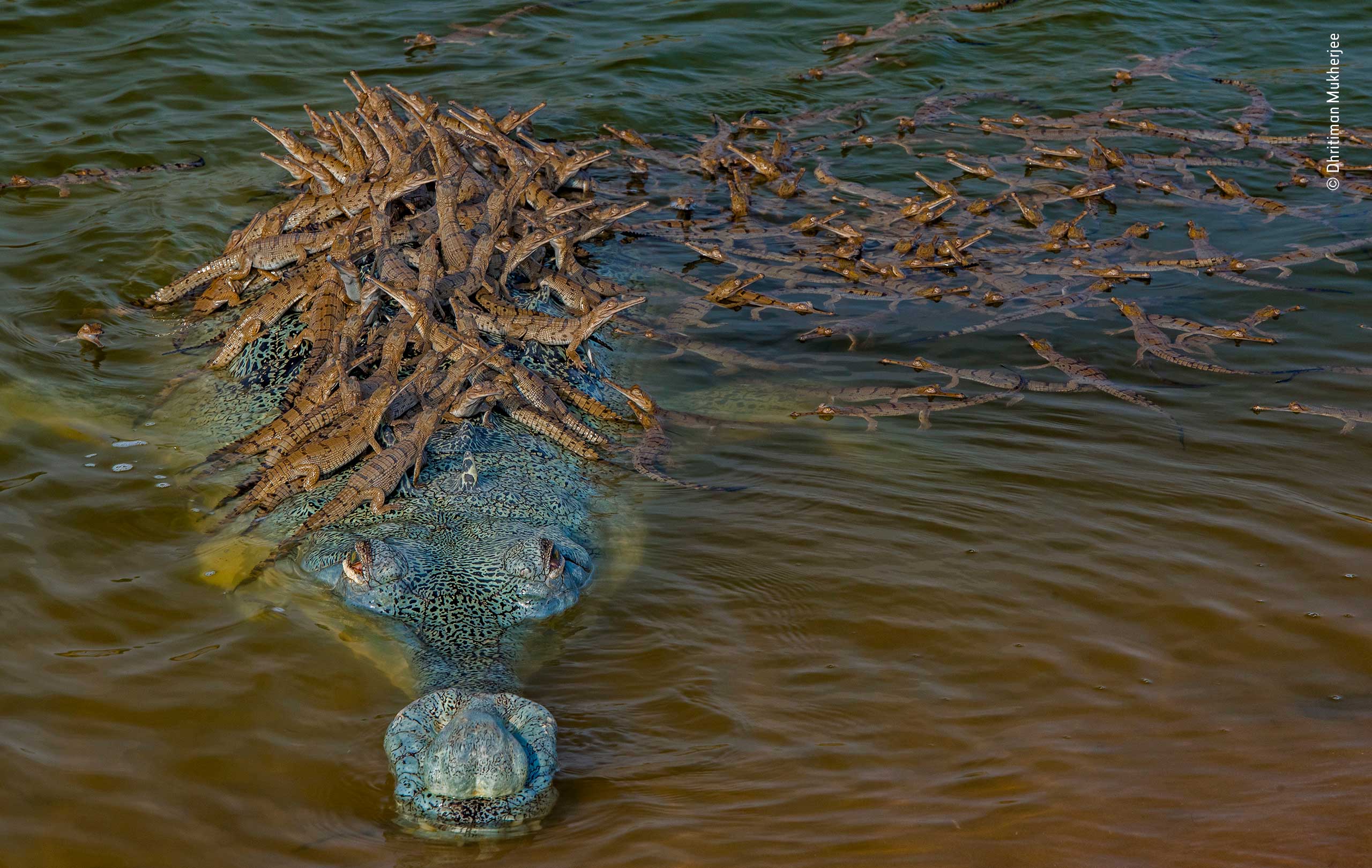
Head Start was Highly Commended in the Behaviour: Amphibians and Reptiles Category © Dhritiman Mukherjee
Wildlife Photographer Dhritiman Mukherjee's photo of a four-metre gharial resting on the bank of the Chambal River in India was Highly Commended in the fifty-sixth Wildlife Photographer of the Year competition.
His image shows a male gharial supporting its month-old offspring as they explore their wetland habitat. Gharials, reptiles that are related to crocodiles, are native to Asia and were once found in rivers from Bhutan to Pakistan, although modern day populations are limited to pockets of habitat in India and Nepal.
The decline in gharial numbers can generally be attributed to human encroachment on their lives. The manipulation of river flows for farming and irrigation have restricted and fragmented gharial habitats while the overfishing of rivers has reduced their prey stocks.
In 1978 a sanctuary was declared surrounding the Chambal River to protect the gharial populations and conserve their habitat.
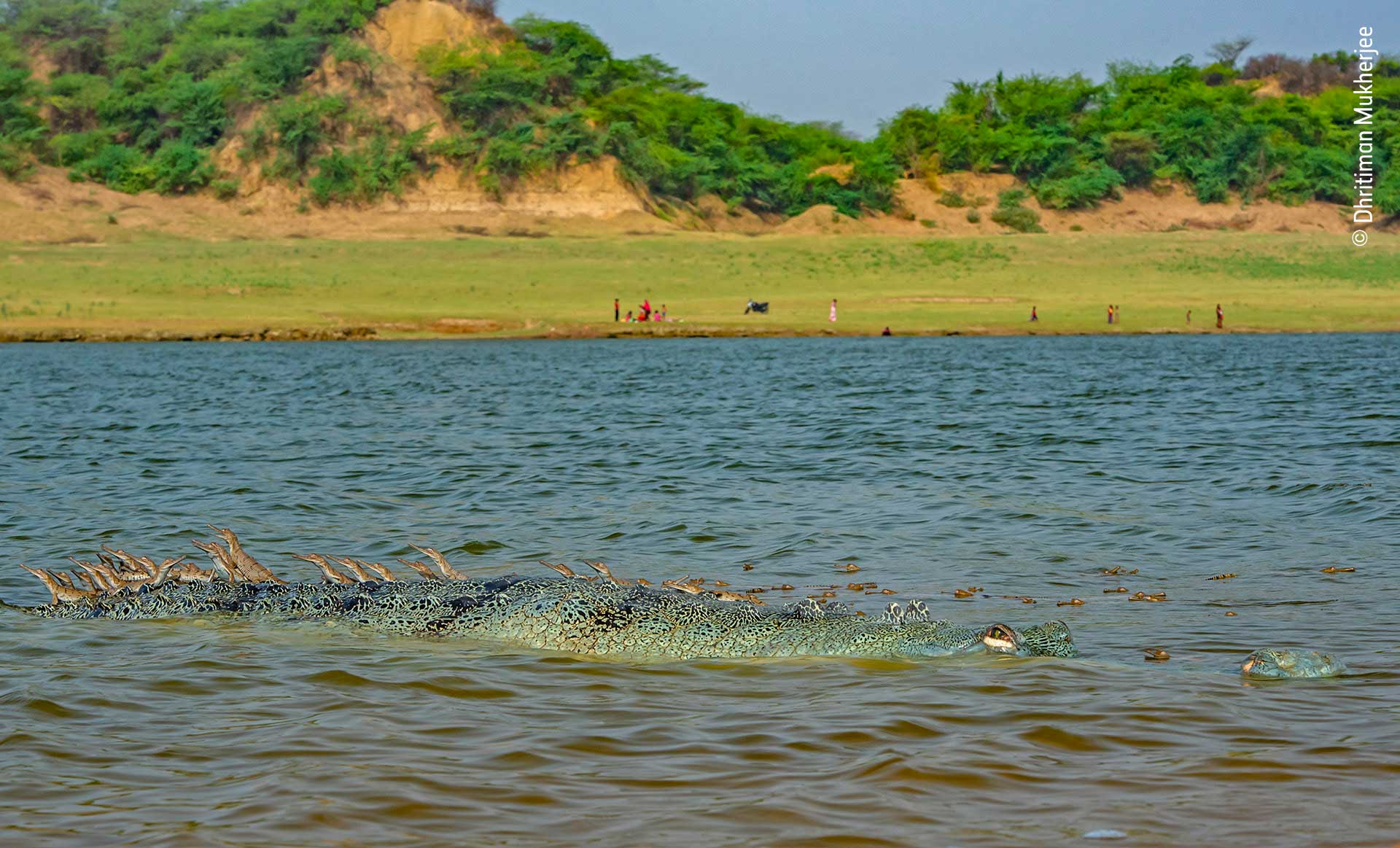
Image © Dhritiman Mukherjee
Dhritiman spent many days observing this group of gharials from across the river before they became comfortable enough with his presence that he could begin documenting their unique behaviour.
This patience and respect for nature is all part of the process. He explains, 'Spending days waiting for the gharial to be comfortable enough to get some interesting shots is a known and expected part of this game.'
Dhritiman sees his photography as an opportunity to connect people with nature. 'I realised that with the help of my images I can connect huge numbers of people emotionally or scientifically with the natural world,' he says.
'Photography can be a great tool to create awareness and consciousness, a great tool for conservation.
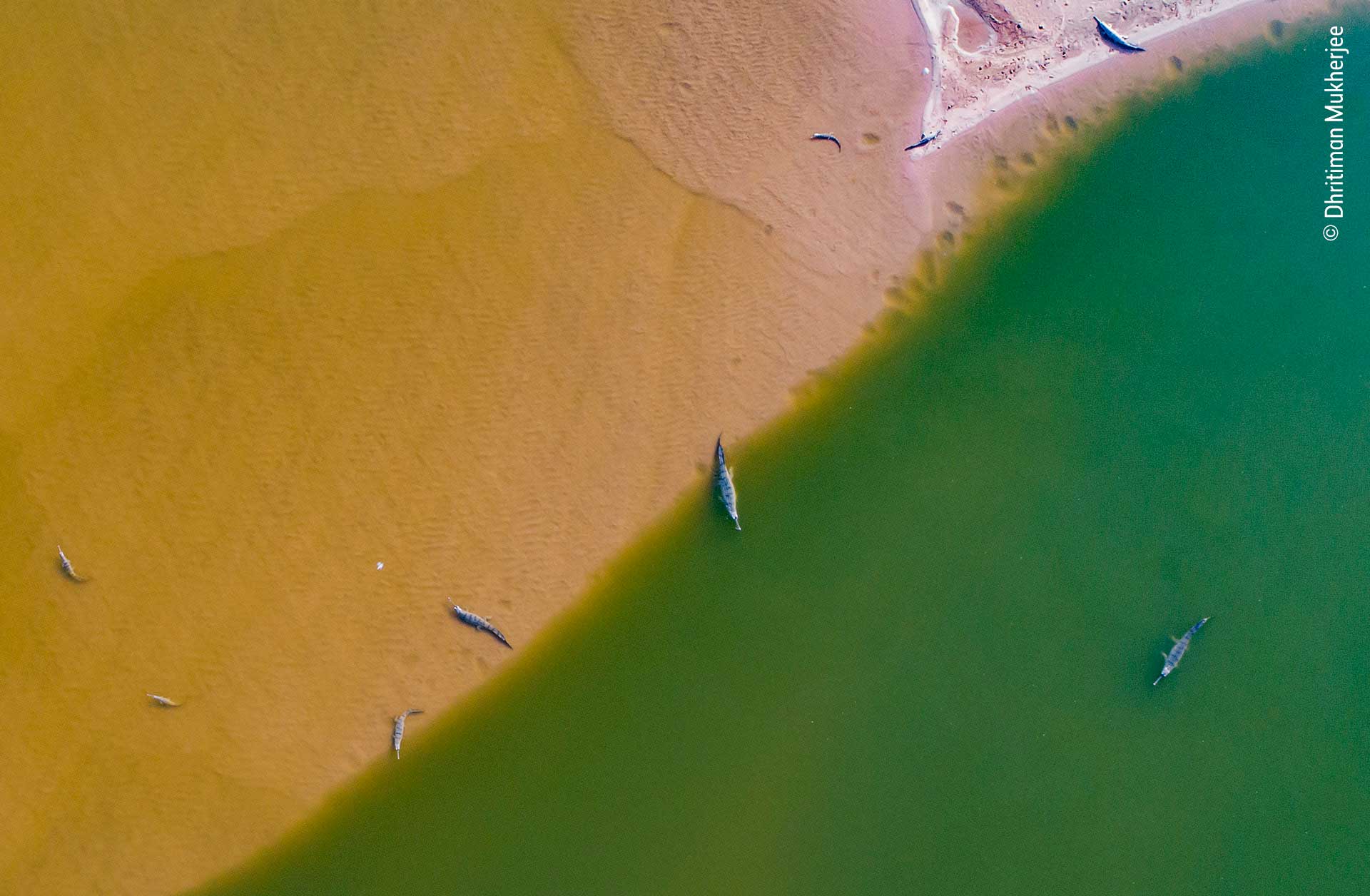
Image © Dhritiman Mukherjee
'As a nature and conservation photographer all species on Earth are equally preferable to me. So, when I select a subject to work on it is not based on my preference, rather it is based on which species needs some attention.'
This is part of the reason why he chose to photograph the gharials of the Chambal River, 'Gharials very much fit in that criterion as they are critically endangered, and they face several threats to their survival. An interesting image can bring them in to the discussion and draw attention.'
A global commodity
One of the biggest threats to the survival of gharials today is closely connected to global development and urbanisation.
Gharials rely on sandy riverbanks to provide a safe place to nest and care for their young. Unfortunately, the sand which makes up these riverbeds is also a key ingredient in concrete, which is used for construction projects around the globe.
Despite its apparent abundance along our beaches and rivers, the sheer volume of sand that is extracted from the world's riverbeds and lakes is unsustainable.
Sand mining makes up around 85% of all mineral extraction on the planet, making it the biggest mining endeavour by quite some margin.
The removal of sand from wetland areas causes dramatic changes to the shape and size of rivers and lakes. By removing vast amounts of sand from the bottom, miners increase the depth and capacity of waterways allowing the water to drain more quickly, effectively destroying the shallow wetland environments that countless species rely on.
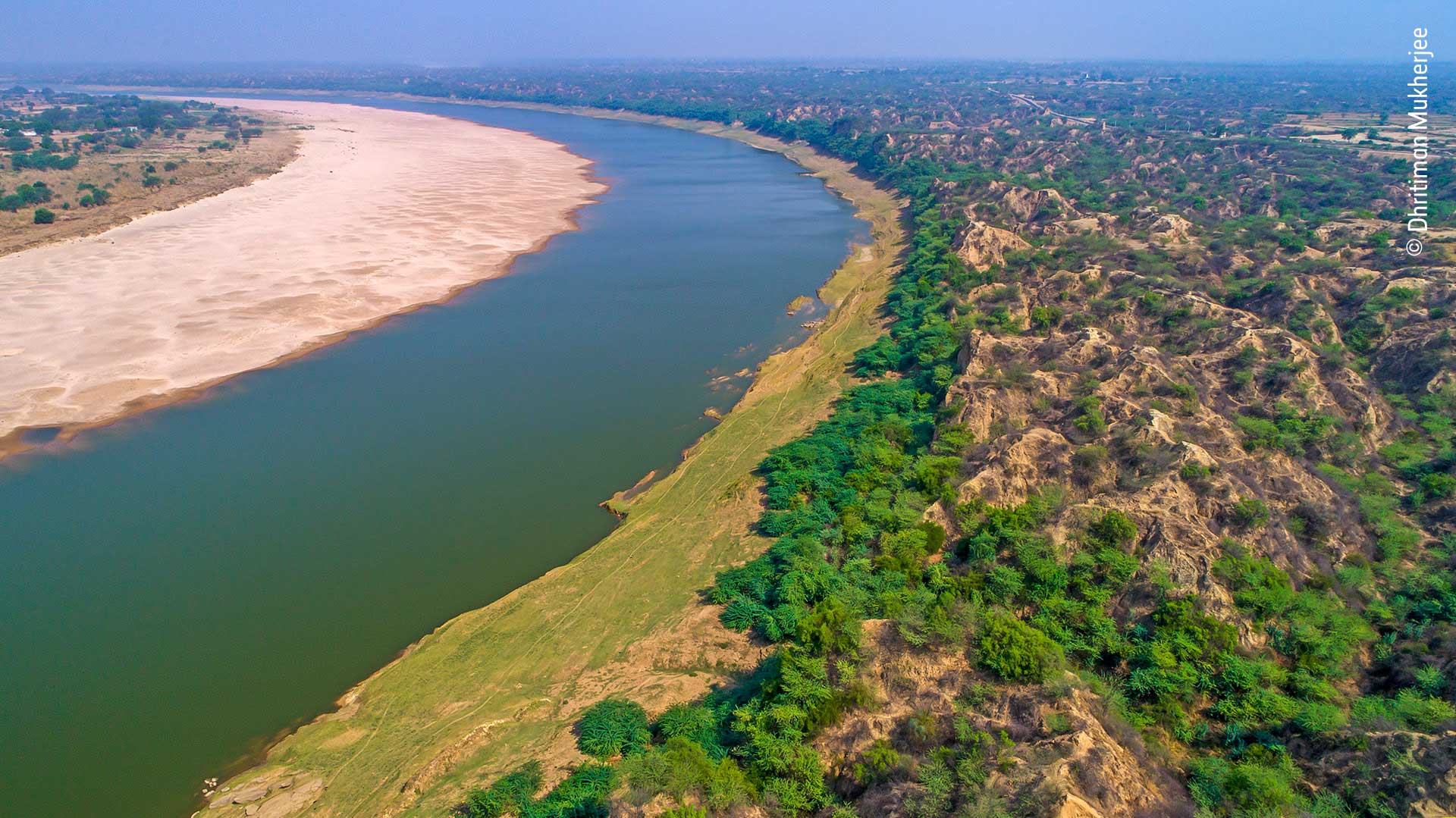
Image © Dhritiman Mukherjee
Widespread demand for building materials is fuelling the destruction of wetland habitats around the world.
In China, the removal of sand from Poyang Lake's outflow channel has greatly increased the amount of water which flows from the lake into the Yangtze River, causing the water level of the lake to drop significantly.
The lower water levels have caused a decline in water quality, affecting fish stocks, which are relied upon by the local population, and reduced the surrounding wetland habitats which are relied on by migratory birds.
Similarly, as Dhritiman explains, 'The Chambal River has a huge problem with sand mining.'
'This river has one of the best populations of gharials as well as marsh crocodiles, turtles and a huge number of both breeding and migratory birds. Mining is one of the major threats to all of the species found here.'
In November 2020 it was reported that a female gharial had travelled 15 kilometres to the Kuno River, a tributary of the Chambal, in order to lay her eggs. Illegal sand mining in Chambal is thought to be responsible for this migration which has seen more and more gharials desert the Chambal River for its less disturbed tributaries.
Surviving against the odds
Although gharials are listed as critically endangered on the IUCN Red List, their numbers are on the rise thanks to local and national conservation efforts.
In India, in response to the quickly declining numbers of gharials, the government established a Crocodile Breeding and Management Project in 1975 which re-established a viable breeding population in the National Chambal Sanctuary.
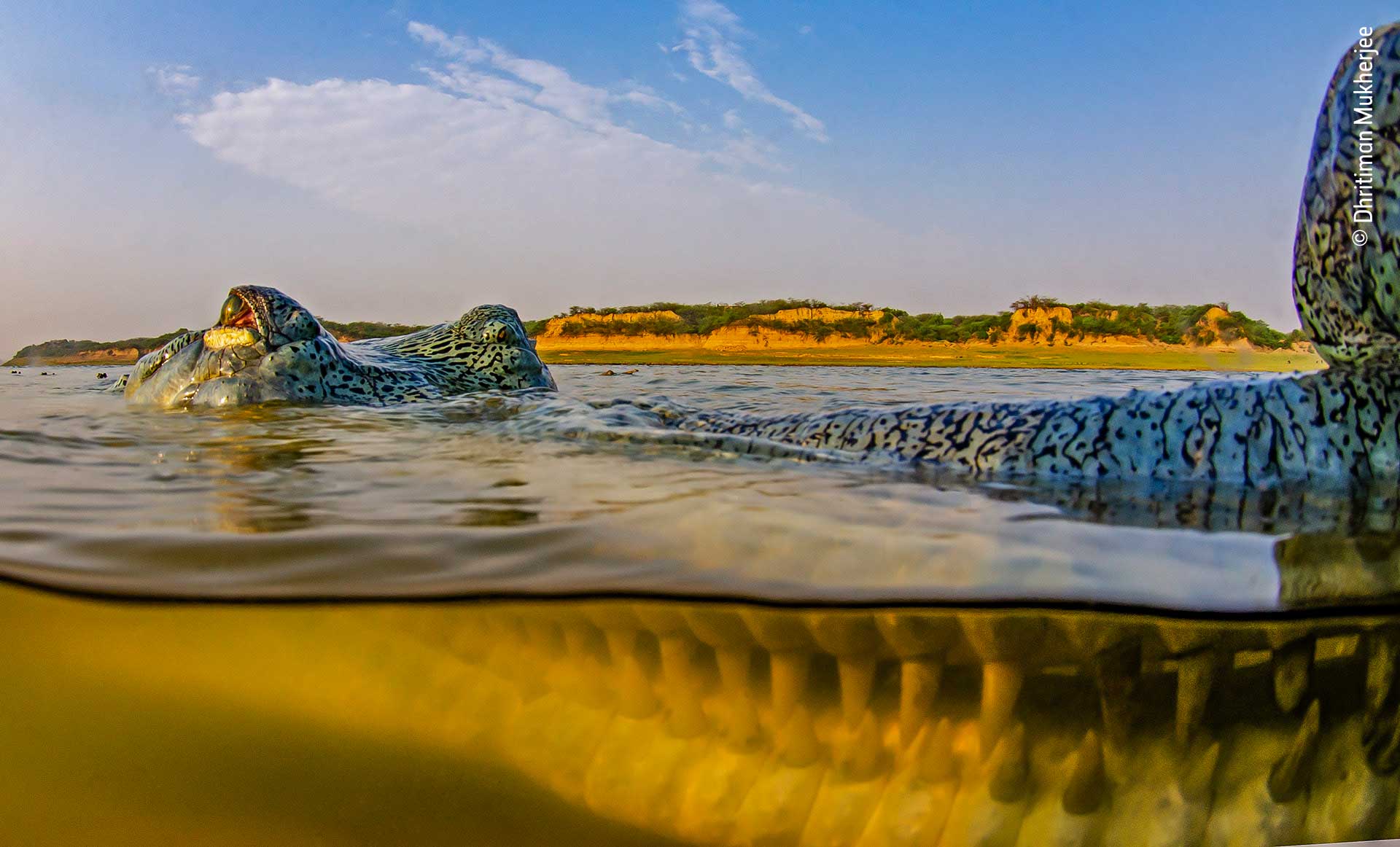
Image © Dhritiman Mukherjee
As well as state interventions, organisations such as WWF-India are working to support reintroduction through captive breeding projects where gharial eggs are collected from nests and hatched within a rehabilitation centre where they can be properly protected.
Once the gharial hatchlings are old enough, they are released into the rivers where they can find suitable habitats to live.
Today, the Chambal River is home to the largest population of gharials, with around 1,255 reported in Madhya Pradesh and 1,876 in the river as a whole.
In addition to the success of breeding and reintroduction programmes, local organisations are working with communities to encourage habitat preservation, safe tourism practices and increased awareness of the importance of wetland ecosystems.
Wetlands, such as Poyang Lake and the gharial's habitat on the Chambal River, are a vitally important tool in the fight against global heating. Wetland habitats are effective carbon sinks and their destruction risks accelerating the world towards climate breakdown.
Protecting the world's wetlands
Wetland ecosystems are one of the most effective carbon sinks on our planet. They also provide a habitat for thousands of different species all over the world.
Here are some things you can do to help protect these important ecosystems:
- Talk to your friends and family about the importance of wetlands
- Use and protect the green spaces near you
- Consider your impact as a tourist and try to support sustainable tourism
- Engage with the work of organisations such as the World Wildlife Fund and the Wildfowl and Wetland Trust who are working to protect the world's wetlands

Explore the gallery
Wildlife Photographer of the Year tells the incredible stories of life on our planet through powerful photography and expert insight.
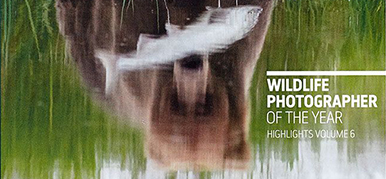
Bring the exhibition home
Volume 6 of our Highlights book includes all of the images from this year's exhibition as well as all 25 People's Choice photos.
Don't miss a thing
Receive email updates about our news, science, exhibitions, events, products, services and fundraising activities. We may occasionally include third-party content from our corporate partners and other museums. We will not share your personal details with these third parties. You must be over the age of 13. Privacy notice.
Follow us on social media